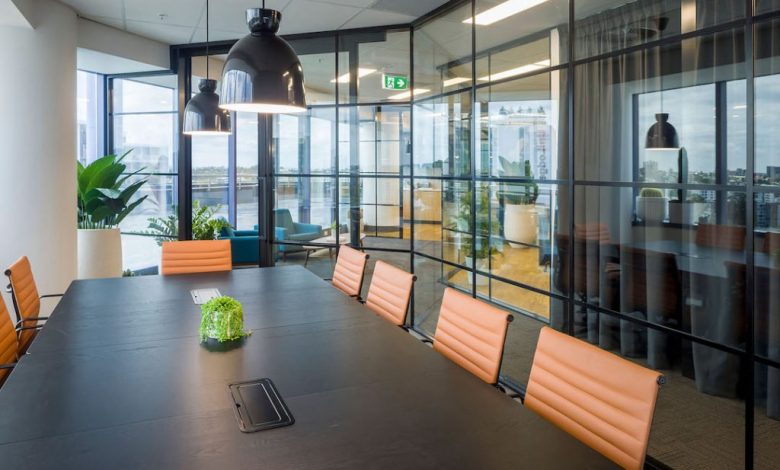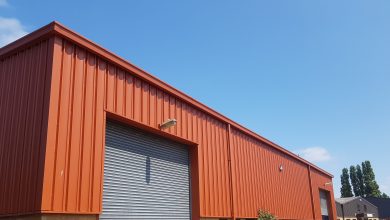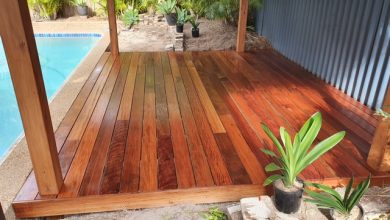Top 8 Trending Commercial Office Fitout Designs

The contemporary workstation has experienced a levelled-up transformation over the years. Businesses are reevaluating and redesigning their commercial office fitouts in Melbourne to suit better-emerging goals, such as sustainability, worker wellbeing, flexibility, and teamwork.
Emerging trends in office design will persist as companies develop workplaces customised to their requirements and corporate cultures.
Knowing the newest trends in office design will help you design a workspace that motivates your staff, whether you want to remodel your workspace or completely outfit your office. Continue reading to learn more about the hottest trends in commercial office design.
1. Hybrid Workspace
Due to the pandemic, several businesses were compelled by the necessity to adopt remote and hybrid work practices. However, a 2023 survey revealed that over 90% of organisations will mix remote and on-site work even as return-to-office plans advance.
Today’s workplace spaces need to balance accommodating remote employees and offering conveniences for collaborative in-person teamwork.
Some design features include hot-desking possibilities, touchdown areas for remote workers, “Zoom Rooms” for virtual meetings, and technology that supports hybrid collaboration. The workplace continues to be a centre for culture, creativity, and connection while providing teams the flexibility they have become accustomed to.
2. Biophilic Design
After spending so much time indoors over the past few years, employees find the promise of bringing nature into the built environment through biophilic design appealing. The current trend in office design is to maximise natural light, vegetation, organic patterns, and natural materials. Workspaces that combine biophilic elements such as living walls, green roofs, courtyards, plants, and artwork inspired by nature are becoming increasingly popular.
Studies indicate that biophilic design enhances wellbeing, creativity, productivity, and employee happiness. It appeals to our basic human need to be in harmony with nature. Biophilic design makes Distinctive identity and appearance possible for businesses looking to establish a lively, motivating work environment.
3. Technology Integration
Businesses can develop environments that are responsive and intelligent through the integration of IoT and linked devices. Features could consist of:
- Utilising occupancy sensors and traffic flow analysis to guide decisions regarding space planning
- Temperature control and intelligent LED lighting systems
- Video conferencing systems, phone booths, interactive screens, and apps for managing amenities, AV equipment, and reservation of spaces for smooth cooperation
- Alexa and other voice assistant technologies allow for hands-free operation.
- Wayfinding and digital signage systems
Innovative office technology allows workspaces to adapt dynamically to changing needs while also gaining data insights. This offers fresh opportunities to maximise effectiveness and design unique employee experiences.
4. Flexible Space
The days of desk assignments and inflexible cubicles are long gone. Businesses and cafe fitouts can build collaborative zones and rearrange layouts with the help of modular furniture systems. Acoustic separators, movable walls, and multipurpose furniture allow for quick space adaptation.
Divining spaces into expansive common areas or discrete, semi-private rooms is simple. Thanks to shared and hot desks, employees can also select where they wish to work each day. Activity-based work environments offer a variety of settings for various modes, such as concentration, teamwork, learning, socialising, or restorative.
5. Sustainability Practises
Businesses trying to lower their carbon footprint should place a high premium on sustainability. Workplaces are becoming greener, including operational energy efficiency, renewable energy sources, and sustainable building materials. Additional environmentally friendly actions could be:
- Programs for recycling and responsible trash disposal
- Paints, adhesives, furniture, and flooring made of non-toxic components with low emissions
- Motion-activated lights to cut down on wasted energy
- solar panels and other renewable energy sources
- Utilising living walls or green roofs to save energy
- Refillable smart water stations, as opposed to plastic bottles
6. Colour Psychology and Aesthetics
The aesthetics of commercial office fitouts in Melbourne and colour schemes create an atmosphere that affects motivation and mood. Vibrant, bright colours tend to energise. Calm, warm neutrals encourage concentration and ease. Calm colours, such as blue or green, can be soothing.
Creativity can be enhanced by deliberately using colour and experimenting with various materials, artwork, and furnishings. Businesses can also integrate brand identity into the aesthetics of their offices by using bright accent walls or striking branding components.
People love working and interacting in a welcoming, branded atmosphere created through thoughtful use of colour, lighting, and décor. The key to optimal performance is psychological balance.
7. Multi-Functional Space
Traditionally, productivity was the primary focus of the office. However, work-life harmony is now crucial. Facilities that provide rest and enjoyment in addition to work are increasingly included in offices.
Employees can roam, unwind, and have fun in gyms, massage rooms, games lounges, cafes, outdoor areas, and even “speakeasy” bars or hidden lounges. Calm introspection might be found in meditation rooms or quiet libraries.
The modern office seeks to be an all-encompassing space that fosters business culture and supports creativity by combining work, play, and relaxation. Workers can easily move between decompression, events, and cooperation activities.
8. Inclusive Design
Diversity, equity, and inclusion initiatives are now incorporated into corporate processes. Office design and cafe fitouts need to take a varied workforce into account. Among the strategies are:
- ADA observance and employee accessibility for individuals with disabilities
- areas that are gender-neutral, such as lactation rooms or bathrooms
- Quiet rooms, prayer rooms, or areas for meditation
- chairs and desks that are ergonomic for various body types
- Multiple-language navigation and signage
- For energy and seasonal affective disorder, natural light
- offering a range of workspaces
In an inclusive workplace, all workers feel appreciated, welcomed, and free to succeed. This is not only the moral thing to do but also wise business.
Conclusion
Office spaces will continue to evolve in tandem with work dynamics. However, by keeping an eye on these trends in office design for 2024, businesses may create customised spaces that unleash creativity, productivity, and purpose for the modern workplace. The workplace continues to be a vital hub for culture, innovation, and community, and the newest office design trends influencing workspace design seek to maximise these benefits.




